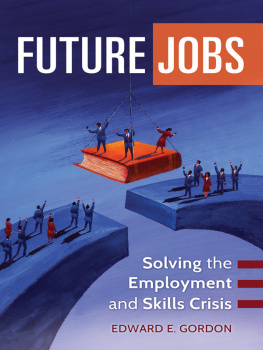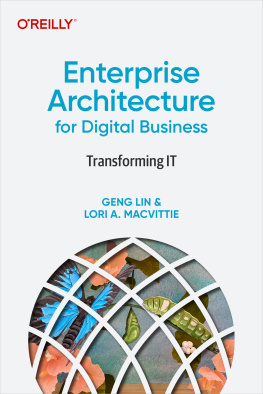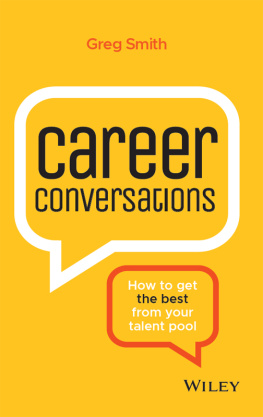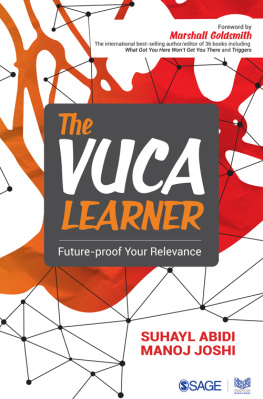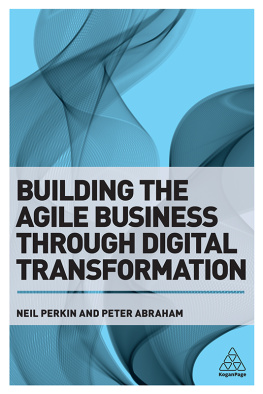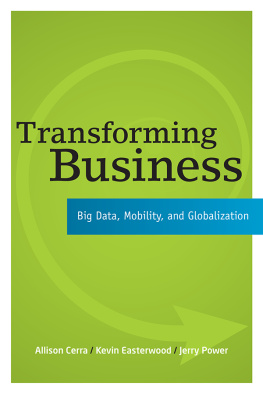THE GREAT SKILLS GAP
Optimizing Talent for the Future of Work
Edited by Jason Wingard and Christine Farrugia
STANFORD BUSINESS BOOKS
An Imprint of Stanford University Press
Stanford, California
STANFORD UNIVERSITY PRESS
Stanford, California
2021 by the Board of Trustees of the Leland Stanford Junior University.
All rights reserved.
Harnessing the Power and Potential of Diversity and Inclusion is reprinted with permission from TIAA. All rights reserved.
How the Future of Work Impacts the Workforce of Technical Organizations is reprinted with permission from NASA. All rights reserved.
No part of this book may be reproduced or transmitted in any form or by any means, electronic or mechanical, including photocopying and recording, or in any information storage or retrieval system without the prior written permission of Stanford University Press.
Special discounts for bulk quantities of Stanford Business Books are available to corporations, professional associations, and other organizations. For details and discount information, contact the special sales department of Stanford University Press. Tel: (650) 725-0820, Fax: (650) 725-3457
Printed in the United States of America on acid-free, archival-quality paper
Library of Congress Cataloging-in-Publication Data
Names: Wingard, Jason, editor. | Farrugia, Christine A., editor.
Title: The great skills gap : optimizing talent for the future of work / edited by Jason Wingard and Christine Farrugia.
Description: Stanford, California : Stanford Business Books, an imprint of Stanford University Press, 2021. | Includes bibliographical references and index.
Identifiers: LCCN 2021001586 (print) | LCCN 2021001587 (ebook) | ISBN 9781503613539 (cloth) | ISBN 9781503628076 (epub)
Subjects: LCSH: Vocational qualificationsUnited States. | Labor supplyEffect of education onUnited States. | Labor supplyEffect of technological innovations onUnited States. | College graduatesEmploymentUnited States. | Continuing educationUnited States. | Education, HigherEconomic aspectsUnited States.
Classification: LCC HF5381.6 G74 2021 (print) | LCC HF5381.6 (ebook) | DDC 331.11/420973dc23
LC record available at https://lccn.loc.gov/2021001586
LC ebook record available at https://lccn.loc.gov/2021001587
Cover design: Rob Ehle
Text design: Kevin Barrett Kane
Typeset at Stanford University Press in 10.5/14 Minion Pro
CONTENTS
Ramon Laguarta, Chairman and CEO, PepsiCo
Neil Irwin, New York Times
Susan Lund and Bryan Hancock, McKinsey & Company
Lance Braunstein, BlackRock
Matthew Pittinsky, Parchment & Blackboard
Michael L. Ulica, National Geographic Society
Amrit Ray, Lu Hong, and Trish White, Pfizer
Gregory L. Robinson, NASA
Uli Heitzlhofer, Lyft
Joseph Williams, Business Insider
Chris Dede, Harvard University
Yakut Gazi and Nelson Baker, Georgia Institute of Technology
Anne Trumbore, Wharton School, University of Pennsylvania
Earl Lewis, Alford Young, Jr., Justin Shaffner, and Julie Arbit, University of Michigan
Christopher Mayer, United States Military Academy at West Point
Kelly J. Otter, Georgetown University
David Schejbal, Marquette University
Matthew Rascoff, Duke University and James DeVaney, University of Michigan
Lauren Weber, Wall Street Journal
Stephanie Bell-Rose and Anne Ollen, TIAA
Ross Wiener, Aspen Institute
X. Susan Zhu, Alexander Alonso, and Johnny C. Taylor, Society for Human Resource Management
Mary Alice McCarthy, New America
Daniel Kuehn, The Urban Institute
Jason A. Tyszko, US Chamber of Commerce Foundation and Robert G. Sheets, George Washington University
Brian K. Fitzgerald, Isabel Cardenas-Navia, and Janet Chen, BusinessHigher Education Forum
LaVerne Srinivasan, Elise Henson, and Farhad Asghar, Carnegie Corporation of New York
ACKNOWLEDGMENTS
We, the editors, would like to thank the following individuals for their support in bringing this ambitious book to fruition:
First, thank you to the University Professional and Continuing Education Association (UPCEA) for their partnership on the Forum on the Future of Work, the books primary content source, held at Columbia University in 2019. Specifically, we appreciate the efforts of Robert Hansen, Molly Nelson, Jordan DiMaggio, and Joseph Fedak for their expert advisory and project management contributions.
Second, we would like to thank Pam Wong at Columbia University for her contributions throughout the developmental stages of the project.
Third, we offer special thanks to Steve Pelletier and Susan Shain for their editorial assistance, and Natalie Nixon for her consulting support.
Finally, we thank the contributors to this volume, whose thought leadership and eagerness to engage in this topic made the book possible.
FOREWORD
If there ever was any doubt, the fallout from COVID-19 has made it clear that technology will drastically change the jobs of the future. The only question remaining is, how will workers adapt? How will seasoned professionals who have spent their lives in one career successfully make the leap to something new? How will young people lay the foundation for a lifetime of meaningful, engaging work? No one has all the answers right now. But one thing we know for sure is that new skill sets will be critical.
A remake of skill sets is already underway. Done successfully, transitioning workers to new skills and new jobs can close the gap between those reaping the rewards of the digital age and those yet to realize its gainsin other words, between the haves and the have-nots. But if the transition fails, the gap between these groups will widen. This transition is being steered by a variety of agents, including educators, policymakers, entrepreneurs, and, of course, corporations.
As the CEO of a multinational Fortune 50 company, I believe that corporations have a responsibility to help their employees navigate the challenges of reskilling for the digital age, so that both employees and companies emerge stronger than before. Not only do employees need transparency about whether their skills are in demand today and if they will still be needed tomorrow, but also companies need to ensure that employees are comfortable enough with digital technology to make it work for them.
Education is a solution. But not just the traditional kind. Employers have for too long focused on bachelors degrees as the ticket to good jobs, but the truth is that many of todays jobs require skills, not degrees. At PepsiCo, we take a multistep approach to upskilling and reskilling our workforce. A range of on-demand learning resources is available anytime, anywhere, on any device. These resources are tagged by skill set, so people can create learning paths based on their development goals. For deeper capability building, we offer tuition support for certificate and degree programs. We also encourage our leaders to teach, bringing together external perspectives with PepsiCo-specific application to bring the learning to life. The problem of reskilling is ultimately solvable, but it takes the public and private sectors working together to change the face of education. Neither companies, nor government, nor education can do it alone. The need for reskilling is larger than any individual or organization.


